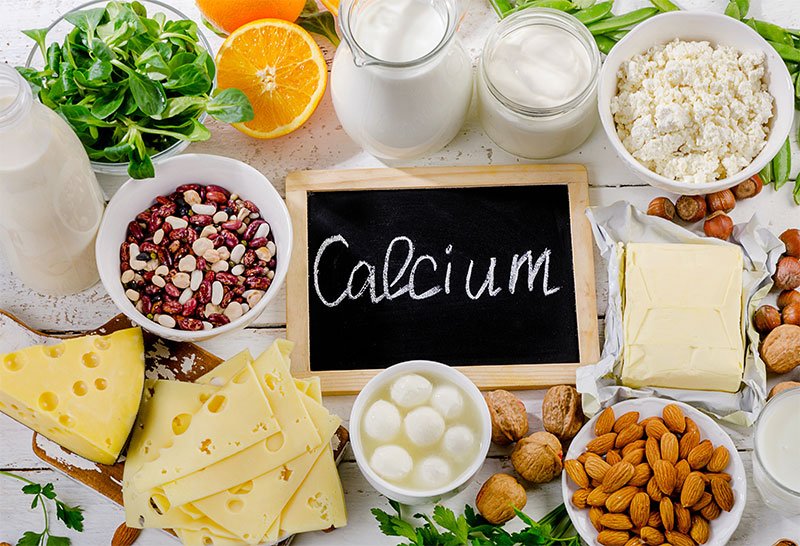Milk – It’s Not The Only Source Of Calcium That “Does A Body Good”
Calcium is the most abundant mineral in the body – 99% is found in your teeth and bones, while only 1% is found in your serum. Calcium is an essential nutrient that is needed for numerous functions in the human body including vascular contraction and vasodilation, nerve transmission, muscle function, intracellular signaling and secretion of hormones. It is therefore important that you consume enough of this essential nutrient for optimal health and well-being.
Early Ad Campaigns
 When you think of calcium, the first thing that probably comes to mind is milk. This may be due to the fact that when you were growing up, various ad campaigns including, “Milk – it does a body good” and “Got Milk?”, were run, promoting milk as the best choice for calcium, and indirectly, for good health. These ad campaigns led many people to believe that they had to drink milk to get enough calcium for optimal health. While it’s true that you do need calcium to maintain proper functioning of your body, milk isn’t the only source of this essential nutrient. While the calcium content in milk is quite high with 1 cup of 1% milk containing 305 mg, there are a variety of alternative sources of calcium available to help you to achieve the recommended daily intake.
When you think of calcium, the first thing that probably comes to mind is milk. This may be due to the fact that when you were growing up, various ad campaigns including, “Milk – it does a body good” and “Got Milk?”, were run, promoting milk as the best choice for calcium, and indirectly, for good health. These ad campaigns led many people to believe that they had to drink milk to get enough calcium for optimal health. While it’s true that you do need calcium to maintain proper functioning of your body, milk isn’t the only source of this essential nutrient. While the calcium content in milk is quite high with 1 cup of 1% milk containing 305 mg, there are a variety of alternative sources of calcium available to help you to achieve the recommended daily intake.
Recommended Daily Allowances (RDA)
The Food and Nutrition Board (FNB) has established recommended dietary allowances (RDA) for calcium:
- Males and females aged 0-6 months: 200 mg
- Males and female aged 7-12 months: 260 mg
- Males and females aged 1-3 years: 700 mg
- Males and females aged 4-8 years: 1,000 mg
- Males and females aged 9-18 years: 1,300 mg
- Males and females aged 19-50 years: 1,000 mg
- Males aged 51-70 years: 1,000 mg
- Females aged 51-70 years: 1,200 mg
- Males and females aged 71+ years: 1,200 mg
Alternative Food Sources with High Calcium Content
In addition to milk, yogurt and cheese are the main food sources of calcium for Americans. Let’s take a look at the calcium content in some these dairy food options:
Cheese
- 1.5 ounces Romano cheese: 452 mg
- 1.5 ounces Gruyere cheese: 430 mg
- ½ cup part skim Ricotta cheese: 337 mg
- 1.5 ounces part skim mozzarella cheese: 333 mg
Yogurt
- 8 ounces plain, non-fat yogurt: 452 mg
- 8 ounces plain, low fat yogurt: 415 mg
- 8 ounces fruit, low fat yogurt: 383 mg
For those with lactose intolerance, or simply an aversion to dairy, here are a few non-dairy alternative food sources of calcium:
Fish Sources
- 3 ounces canned sardines in oil with bones: 325 mg
- 8 ounces calcium-fortified soy milk: 299 mg
- 3 ounces canned pink salmon with bone: 181 mg
Non-dairy Beverages
- 1 cup almond milk: 451 mg
- 6 ounces calcium-fortified orange juice: 261 mg
Vegetables
- 1 cup raw mustard spinach (tendergreen): 315 mg
- ½ cup tofu (firm) made with calcium sulfate: 253 mg
- ½ cup fresh, boiled, turnip greens: 99 mg
- 1 cup fresh, cooked, kale: 94 mg
- 1 cup raw, shredded, Chinese cabbage: 74 mg
- ½ cup raw broccoli: 21 mg
Grains
- 1 cup calcium-fortified ready to eat cereal: 100 – 1,000 mg
- 1 slice white bread: 73 mg
As you can see, milk isn’t the only option you have to get enough calcium in your diet. There are numerous other dairy and non-dairy sources of calcium that you can consume to ensure that you’re getting enough of this essential nutrient to help you achieve optimal health.
You may also like:
Omega-3 Fatty Acids: Not Just For Heart & Eye Health – They Can Help Ease Joint Pain Too
How To Reduce Inflammation By Making Simple Changes To Your Diet
